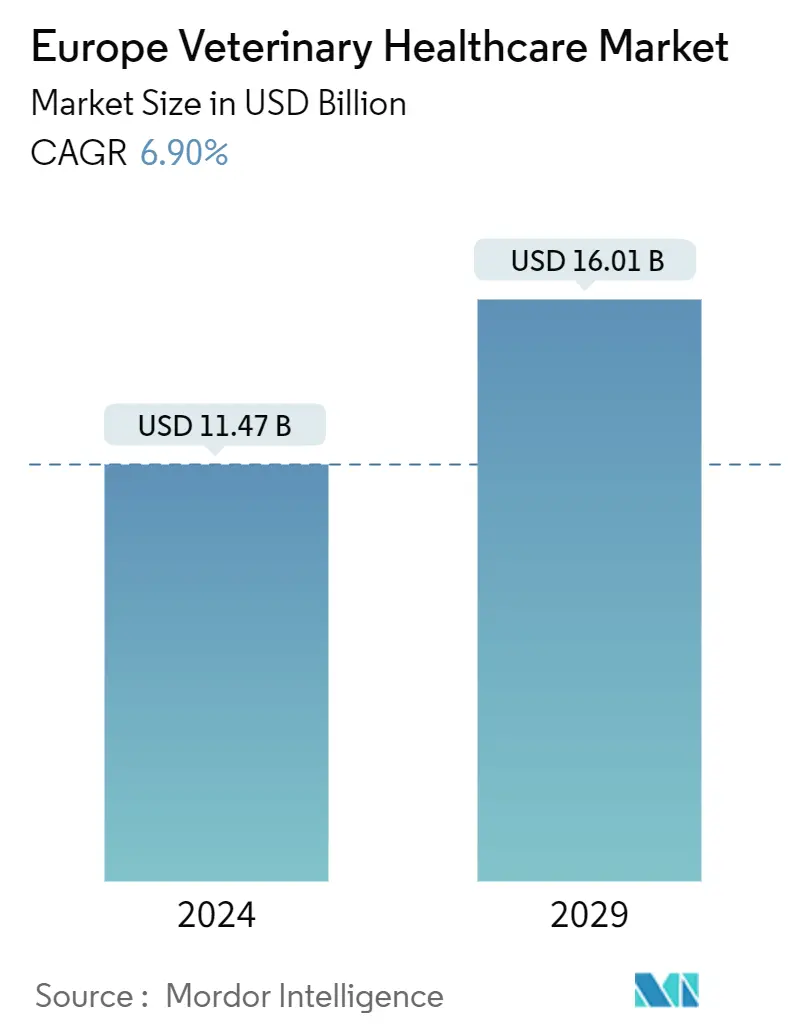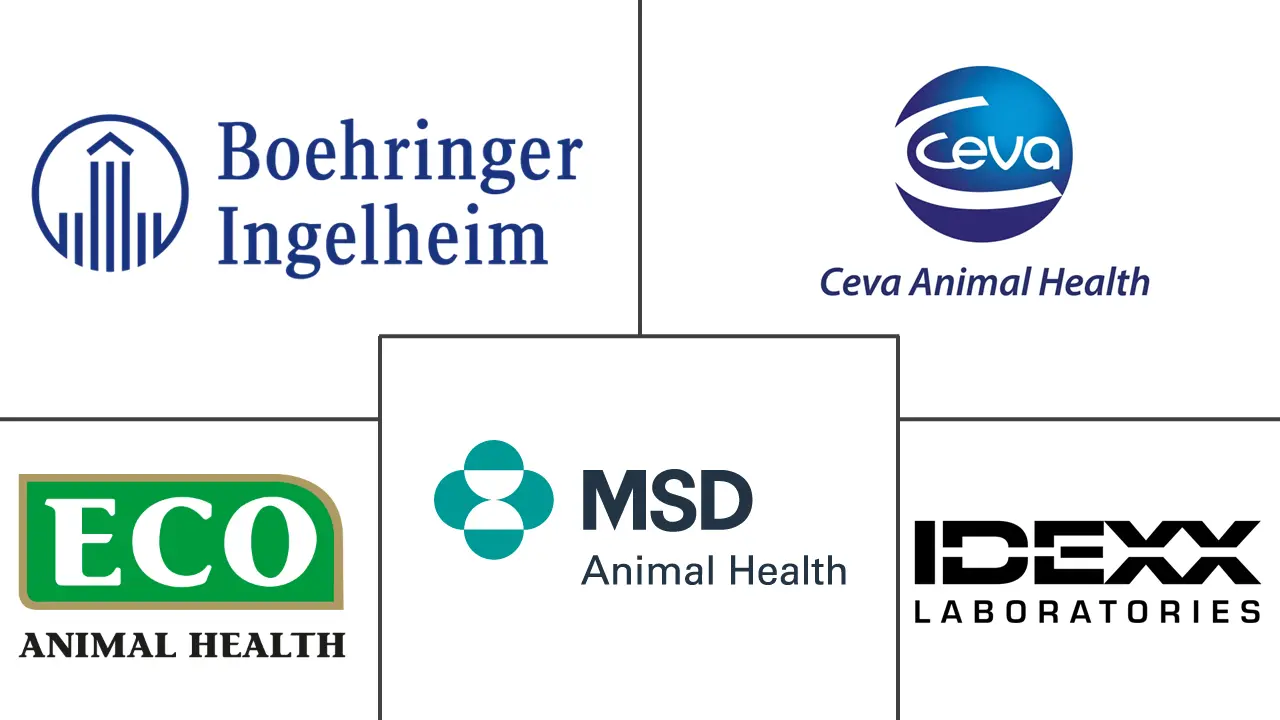Market Size of Europe Veterinary Healthcare Industry

| Study Period | 2021 - 2029 |
| Base Year For Estimation | 2023 |
| Forecast Data Period | 2024 - 2029 |
| Market Size (2024) | USD 11.47 Billion |
| Market Size (2029) | USD 16.01 Billion |
| CAGR (2024 - 2029) | 6.90 % |
Major Players
*Disclaimer: Major Players sorted in no particular order |
Need a report that reflects how COVID-19 has impacted this market and its growth?
Europe Veterinary Healthcare Market Analysis
The Europe Veterinary Healthcare Market size is estimated at USD 11.47 billion in 2024, and is expected to reach USD 16.01 billion by 2029, growing at a CAGR of 6.90% during the forecast period (2024-2029).
The major factors driving the market's growth include the rise in pet adoptions, increasing initiatives by governments and animal welfare associations, and technological advancements in animal healthcare in the region.
In recent years, pet owners have increasingly adopted animals influenced by their interests and concerns, leading to higher demands for veterinary healthcare products in Europe, including diagnostic imaging and treatment to ensure the health and well-being of these animals. This rising pet population, coupled with changes in lifestyle patterns, increased the adoption of diagnostic imaging and medicine products for animals, boosting the growth of the veterinary healthcare market in Europe.
For instance, according to data updated by the European Pet Food Industry Federation (FEDIAF), Report 2023, the dog population in the region was over 66.8 million, while the cat population was over 77.9 million in Europe in 2023. According to the same source, in Poland, in 2023, over 49% of the households owned at least one dog, and over 40% owned a cat. The Global State of Pet Care report published by the HealthForAnimals Organization in September 2022 highlighted that over half a billion dogs and cats were adopted by families in Europe, along with the United States, Brazil, and China. The high pet ownership rates in Europe are driving the growth of the veterinary healthcare market by increasing the demand for pet healthcare therapeutics and products.
Moreover, major players in the market are working on introducing novel product launches to cater to the rising demand for veterinary products in the region. For instance, in April 2023, Bioberica launched its Atopivet Collar as one of the first alternatives to traditional topical and oral treatments for skin diseases in Spain. The collar releases its biologically derived skin health ingredients directly onto the pet's skin, which is then spread across the body through the skin's lipids.
In conclusion, the factors mentioned above, such as the rising pet population and technological advancements by key players in the market, are expected to propel the European veterinary healthcare market's growth during the forecast period. However, counterfeit medicines and the increasing cost of animal testing and veterinary therapeutics are expected to hinder the market's growth during the study period.

